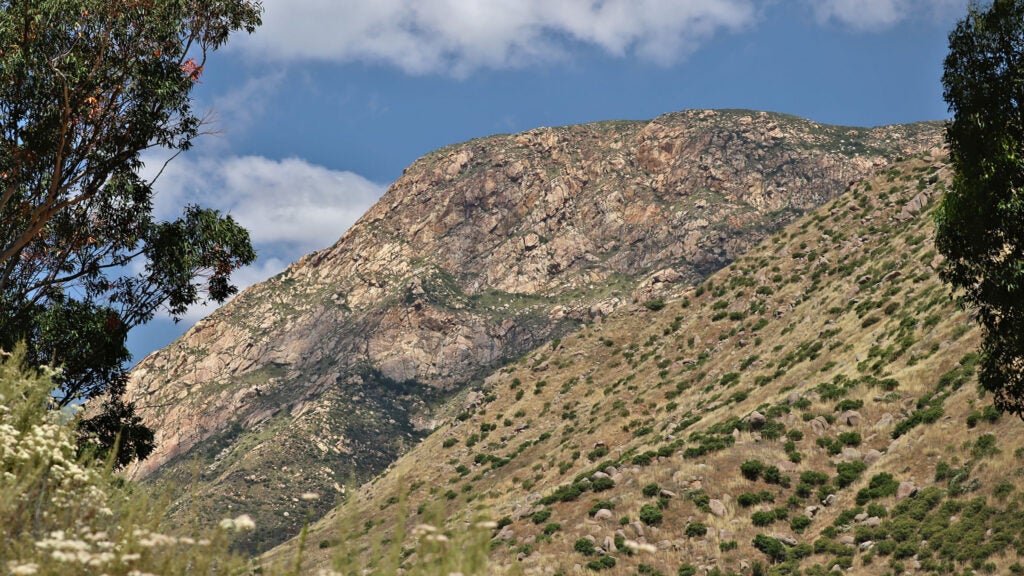No products in the cart.
Outdoor Adventure
A Climber Fell to His Death While Free-Soloing near San Diego
Outside’s long reads email newsletter features our strongest writing, most ambitious reporting, and award-winning storytelling about the outdoors.
Around noon on Sunday, December 4, authorities east of San Diego received a call that a climber had fallen around 200 feet while ascending the Left Wall on El Cajon Mountain. The climber, Nathaniel Masahi Takatsuno, 22, had, according to eye-witness accounts, been free soloing Leonids—a three-pitch 5.9 route—when he fell.
Authorities sent a paramedic by helicopter to Takatsuno on Sunday afternoon, but he was pronounced dead at the scene. His body could not be retrieved until Monday due to the conditions and the time of day.
Lt. Ruben Medina with San Diego County Sheriff’s Department told CBS8, “By the time we would have been able to get to where the climber was—it’s about 2,500 feet in elevation, and it’s about a two-hour hike to get to the climber—it made yesterday’s recovery impossible. It would have been nightfall as well as complicated getting back down.”
According to Michael Sandler, who was present at the crag, Takatsuno had said he’d intended to climb the nearby Meteor, a four-pitch 5.8. It’s unclear whether he changed his mind or had simply gotten onto the wrong route. El Cajon Mountain is San Diego’s premier crag. Reaching the 500-foot-tall cliff, as Medina suggested, involves a strenuous, uphill approach. The rock, according to locals, makes the effort worthwhile.
“I would describe it as world-class multi-pitch climbing in the 5.8 to 5.11 range,” says Randy Leavitt, a prolific first ascensionist. Leavitt helped develop many El Cajon routes in the early 2000s. “The rock is really high-quality, featured granite. [It] almost appears like sandstone, the way it forms nice edges and scoops and things like that.”
Leavitt had been climbing at El Cajon Mountain the day the accident occurred, saying that he was probably a half mile away on another section of the mountain. “The helicopters were flying all over the place, and we couldn’t understand why they were flying so close to the wall,” he said.
El Cajon Mountain is generally considered a safe climbing area. According to Leavitt, the biggest hazard climbers face is rockfall since the routes tend to be less than vertical. Most routes on the mountain are well protected. But being south-facing, the conditions can be tough. The best time of year to climb there is in the spring, when the sun is high and the cliff goes into the shade at one o’clock. This time of year, says Leavitt, the cliff stays sunny until about 4 p.m.
“Leonids is by far the most popular route,” says Leavitt. “Everyone wants to do it because everyone knows about it.” He stressed that in the sun, it can feel greasy. “It’s 5.9, but there’s parts where friction matters, and there’s not a lot of positive holds.”
The cause of the fall is still unknown, as is Takatsuno’s familiarity with the climb, but he was on the route in the sun, which Leavitt thinks may have factored in. Also, if he got off-route, according to Leavitt, the rock may have crumbled.
Leonids is not commonly soloed because most people rappel off. Some eyewitnesses commented on the Southern California Climbers page, saying that Takatsuno carried a pack with a rope to rappel.
The climber partner of the deceased, Dachel Fohne, told Fox5, “I just didn’t want to believe it, and I still don’t want to believe it.”
Source link

